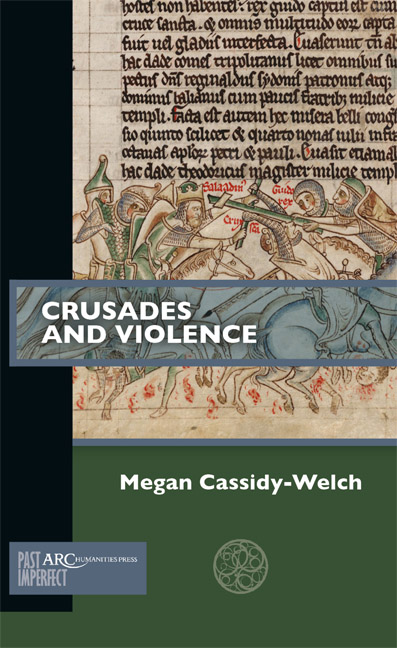Chapter 1 - Spaces of Violence
Published online by Cambridge University Press: 13 February 2024
Summary
Crusading was an inherently spatial practice, involving mobility (physical and imagined), claims to possession of territory, settlement, and the transformation of cities and landscapes. At the very heart of crusading lay the connec-tion between crusade and the spiritual journey of pilgrimage. This remained strong throughout the twelfth and thirteenth centuries even as crusade destinations moved well beyond the Holy Land. Both crusade and pilgrimage were penitential activities undertaken for spiritual benefit, both involved a vow or oath, and both were undertakings premised on the idea and reality of travel. Famously described by Jonathan Riley-Smith as like a “military monastery on the move,” the crusade was described in Latin sources in spatial terms such as iter Sancti Sepulchri (journey to the Holy Sepulchre), via (way, path), profectio (journey), while crusaders were peregrini (pilgrims), as well as crucesignati (those signed with the cross), and milites Christi (knights of Christ).
Given crusading's links to ideas about place and practices of movement, space provides a useful interpretive lens through which to explore crusade violence. This is partly because the military reality of a crusade was always underpinned by purposeful ideas about its destination. To look more closely at the spatial hermeneutics of crusading is to gain insight into how certain locations became sites of violence, how violence was practised to assert territorial ownership, and how violence worked to sacralize places. Thinking about these questions also helps us to situate crusading in the broader socio-cultural contexts that informed and legitimized it. As I noted in the previous chapter, Philippe Buc and Susannah Throop have recently argued that the history of the crusades is part of a longer and deeper story about Christian violence. I would add that theory and method play a role in telling this story, too. Here, what some have called the “spatial turn” in history is helpful in guiding us through some of the rhetoric around the performance and legitimization of violence, and the many discursive contexts that shaped it.
Henri Lefebvre imagined that an overlapping “spatial triad”—physical space, social space, and mental space—is a useful way to describe the production of space.
- Type
- Chapter
- Information
- Crusades and Violence , pp. 19 - 42Publisher: Amsterdam University PressPrint publication year: 2023

